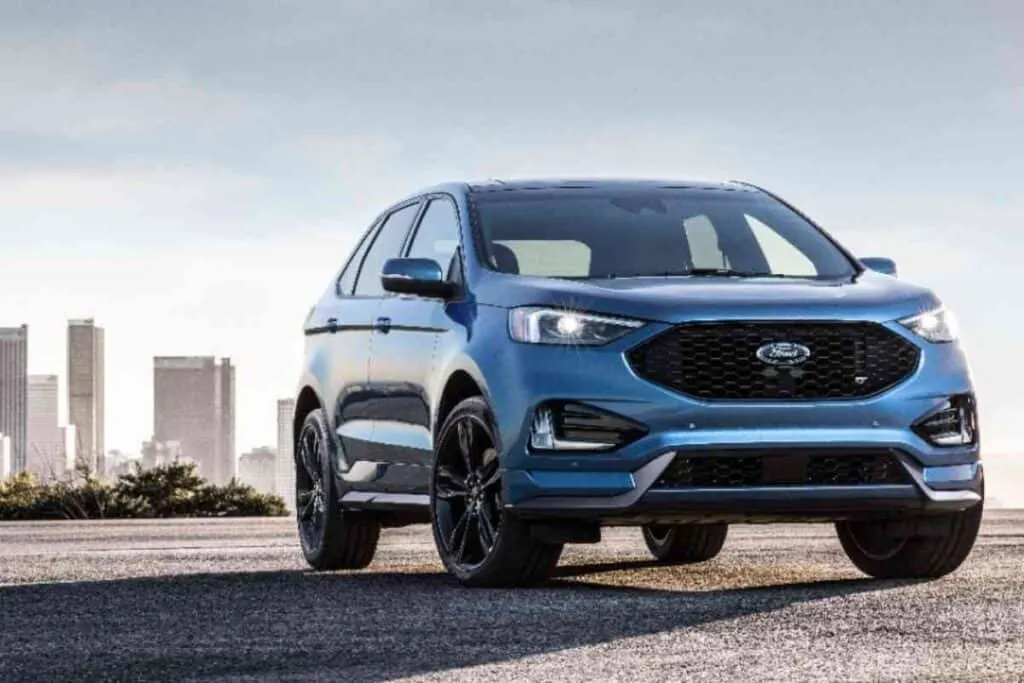Front-wheel drive cars are very common in America. They have also been around for a long time.
They first gained popularity in the early 2000s because Harry Miller used them during racing for the Indy 500. There were also several manufacturers manufacturing front-wheel drive cars in Europe at the time.
Front wheel drive cars are more prominent because they use less fuel, have a compact component layout, experience fewer breakdowns, and provide a stable steering platform.
With that in mind, let’s learn more about how front-wheel drives work and how they compare to rear-wheel drive wheel vehicles!
History of FWD Cars
In the US, the first front-wheel-drive recorded was the 1936 Cord. It was a revolutionary vehicle, thanks to its masterful styling and advanced mechanical build.
Despite its innovativeness, the Cord was a market failure after only 2 years. By the time production shut down, they had only produced 3000 vehicles which included a convertible, a sedan, and a convertible sedan.
The shutdown may have been prompted by the numerous problems experienced by the front-wheel-drive unit. On occasion, the car would clank and the CV joints would also dry out. There was a problem with the air-shift, making it need multiple adjustments and repairs.
The 1960s saw a shift in front-wheel-drive cars with the introduction of Japanese cars. People preferred them to American front-wheel-drive cars. This is because they were cheaper to build and had no driveshaft balance and the issues that came with them.
They were also smaller, efficient, and lighter. They were also more economical because of easy access to replacement parts and repairs.
Long story short, the history of front-wheel-drive cars dates almost a century back. Over the years, manufacturing companies have perfected and improved the technology and now, most cars are front-wheel-drive. Let’s explore the differences between front-wheel drive and rear-wheel drive.

Front-Wheel Drive vs Rear-Wheel Drive
Most cars made and sold in the US since before the Ford Model T, were mostly Rear-wheel drive (RWD). In an RWD, the engine is usually in the front and the transmission right behind the engine.
The driving shaft runs back to the rear axle to control the rear wheel during driving.
The first Volkswagen and other smaller vehicles had rear-wheel drive with their engines either above or behind the rear axle. However, most manufacturers don’t prefer the rear-wheel-drive design yet it’s older.
It’s only found in high-horsepower engines such as a few sedans, luxury cars, sports cars, and full-size pickup trucks and SUVs
This technology is perfect for bug vehicles that undergo more strenuous use than normal cars. These heavy-duty components, therefore, don’t make sense in everyday use vehicles.
Examples of vehicles with RWDs include:
- Kia Stinger
- Dodge Challenge
- BMW 5 Series sedans
- Toyota Supra
- Mazda MX-5 Miata
- Many Mercedes-Benz models and
- Most pickup truck models apart from the Honda Ridgeline
On the other hand, the Front-wheel drive (FWD) had its engine and the transmission behind the hood. They worked together to deliver direct power to the front wheels.
At the start of the 20th century, Front-wheel-drive car designs suffered due to the great depression and its complex engineering thus making it hard to produce mainstream products. However, things changed when the Peugeot/Renault and Mini brands started gaining popularity overseas.
In the 1980s, the success of K-Cars, Honda Civic, and Dodge Omni paved the way for the manufacture of more SUVs and compact vehicles using the FWD design. From then on, almost all vehicles produced were front-wheel drive.
Front-Wheel-Drive Advantages
There is a reason why front-wheel drive vehicles are more common than any design. The following are some of the pros of having a front-wheel drive:
1. Its Components Are More Compact
Compared to old cars, they are smaller because of their compact components. This is because the transmission, driveline, and engine all fit under the hood.
This is different from cars in the 1970s, with six-foot-deep engine bays.
2. It Uses Less Fuel
Being more compact means that the vehicle is lighter compared to RWDs.
This means that the vehicle will consume less fuel as it doesn’t have to haul excess weight.
3. It Doesn’t Have a “Hump Seat”
Because all components needed are upfront, the interior floor is flat.
Anyone who seats in the middle seat will be more comfortable and there is even more space to carry cargo in the vehicle thanks to the flat surface.
4. It Offers a More Stable Drive
When driving the wheels are pulled along instead of being pushed from the rear axle. This makes for more linear acceleration, and more stability while steering.
5. It’s More Reliable
Because the FWD has fewer components compared to the RWD, it has fewer parts that could break down and require repairs.
Parts such as the U-joints and the rear driveshafts aren’t required in an FWD.
Front-Wheel-Drive Disadvantages
1. Handling Issues Because of Uneven Weight Distribution
Because all the heaviest parts are in one location of the vehicles i.e., between the front wheels, there is less stability.
This is evident especially when a vehicle is going through corners. The rear wheels are likely to lose traction more so if the road is slippery.
2. Torque Steer When Accelerating
When you press the gas pedal hard, the steering wheel will jerk to one side in a condition commonly known as “torque steer.”
This occurs mainly because there is either a traction or tire pressure difference between the two front wheels. It is uncomfortable although in more serious cases can cause a driver to lose control of the vehicle.
3. Wear and Tear of Components
To make the vehicle smaller and lighter, manufacturers tend to use lighter-duty materials compared to RWDs.
This means that there are more repairs because components are more likely to wear out sooner.
4. Lower Acceleration Potential
Because the front wheels of an FWD are for both steering and accelerating, power is divided between these two functions.
This means that the vehicle doesn’t have enough power to accelerate in a short time and even exceed certain speeds. That’s the reason why sports cars aren’t made using the FWD designs.
5. Less Towing Capacities
You cannot hook extremely heavy cargo to your FWD. This is because it will use the rear axle as a pivot and pull the weight off the front wheels.
This affects the vehicle’s ability to pull a load and maintain control. RWD vehicles will typically pull a heavier load than an FWD.
Rear-Wheel-Drive Advantages
1. Better Weight Distribution
Because the car’s heaviest components are distributed between the front and the rear axle, the vehicle has a better balance.
A nearly 50-50 weight distribution is required for a vehicle to have better handling and control.
2. Less Maintenance
Because RWDs components are heavier, they are sturdier compared to those in FWD vehicles. Vehicles equipped with heavy-duty components are less likely to break frequently.
3. Can Handle More Power
In an RWD, the front wheels will steer the vehicle while the rear vehicle will propel the car forward.
Therefore, the rear wheels can handle more torque and horsepower without damaging any of its components. Therefore, most sports cars are made using the RWD design.
4. No Torque Steer
Because of the division of duties between the front and rear wheels, the issue of torque stress doesn’t exist in an RWD.
5. It Can Load and Tow Heavy Cargo
In an RWD, the weight is put over the rear axle while carrying or towing something heavy. This increases the traction instead of reducing it, therefore, increasing the vehicle’s towing capability.
6. Long Lasting Tires
Because the front wheels are not performing all the driving functions, they will wear evenly with the rear tires.
Therefore, they will last longer if the terrain and no stress is added to the vehicle.
Rear-Wheel-Drive Disadvantages
1. High Fuel Consumption
Because an RWD is heavier, it will consume more fuel than an FWD. It required more fuel to move the car from stop to a steady motion. The bigger the vehicle, the more it will consume.
2. It Loses Horsepower Between the Wheels and the Engine
An RWD vehicle uses a large spinning driveshaft and additional rear axle components.
These extra components take away some of the vehicle’s horsepower i.e. In some cases, up to 30% is lost between the engine and the wheels.
3. Oversteering
You have to be careful when making a turn in an RWD. This is because a turn in slippery and loose roads can lead to the rear wheels moving out of alignment with the rest of the vehicle.
The back end of the car swings out and an inexperienced driver might lose control of the vehicle.
4. Loss of Interior Space
Because the rear and the driveshaft differentials need space underneath the car, it has high floors to accommodate these components.
This might take some space from the passengers’ seating areas and the cargo space.
Is FWD Better Than RWD?
The choice is up to the driver. It’s tough for anyone to give you a conclusive answer because it will depend on your needs. You will select what you are comfortable with in terms of functionality, aesthetics, and cost of the vehicle.
If you are looking for a compact, fuel-efficient vehicle, an FWD will most likely be a better choice for you. However, if you need a high-performance vehicle for either carrying heavy loads or sporting needs, you should go for an FWD.
Even if you go out looking for a new or used vehicle and find that there are more FWDs, don’t settle. Pick a vehicle based on your usage.
